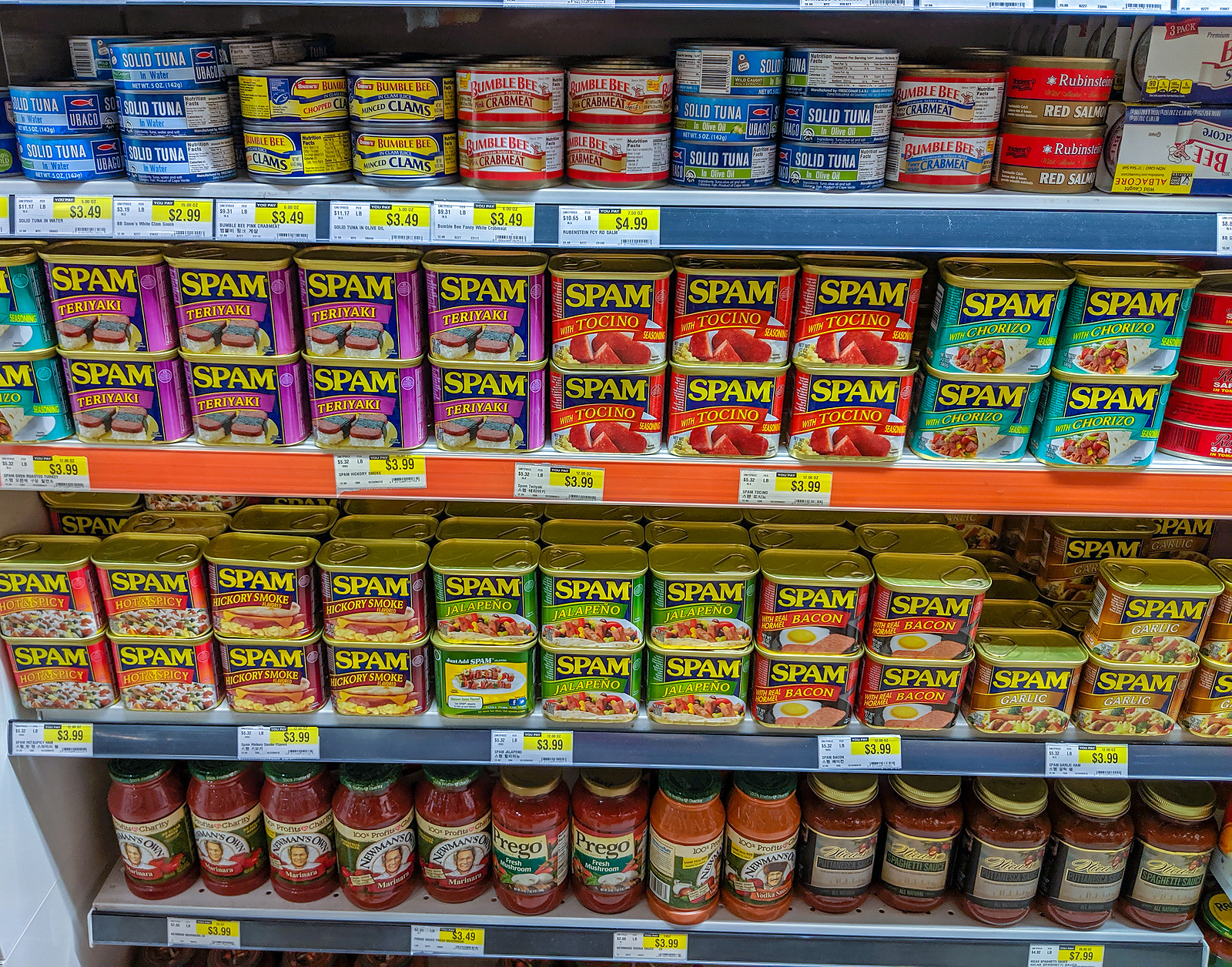SPAM®
March is the month in which the UK celebrates SPAM Appreciation Week. Although the U.S. doesn’t hold a SPAM appreciation week in March, it is our National Deli Meat Month. Before reading this monthly How It’s Made article on SPAM, check out this link to learn more about National Deli Meat Month.
Let’s start with some interesting facts about SPAM.
- SPAM is brought to you by the Hormel Foods company which has sold more than 8 BILLION cans since it’s introduction in 1937 (in 44 countries).
Note: Hormel Foods Company was founded in 1891 right here in my home state of Minnesota!
- Upon creation, SPAM had an easy lead on their competition. Unlike other canned meat products, it did not require refrigeration.
- The name “SPAM” came from a contest in which the winner received $100.00 for coming up with the name.
- No one really knows what (or if) SPAM stands for (something) specific.
Is it short for “shoulder of pork and ham”?
Does it stand for “spiced ham”?
- It was widely used by U.S. troops during World War II. In fact, troops even used it to lubricate their guns and grease their boots.
- Hormel estimates they sell three cans of it every second!
- SPAM shows up in 1 of 3 American households.
- Hawaii and Guam are two of the biggest SPAM consumers in the world, due to the introduction of it during World War II.
The average citizen in Guam consumes 16 cans of it per year.
SPAM is sold at McDonalds in Guam.
- SPAM is considered a delicacy in South Korea and is often given as a sign of respect during the holidays.
How It’s Made
The creator of SPAM, Jay Hormel, was inspired by a trip to the deli where he saw canned meat being sliced by the butcher. Jay decided Hormel’s next product would be a canned meat. After some trial and error, Jay also determined he could cut out the middle man (a butcher) by selling smaller cans of the meat directly to the consumer, allowing consumers to cut it themselves. This, and the fact that SPAM did not need to be refrigerated unlike other canned meats, was a real game changer for American households!
As a result of its hero status, Minnesotans are proud to call Spam ours, even if others label it a “Mystery Meat”, and we are here today to demystify it.
SPAM Ingredients
- Ground Pork mixed with Ground Ham
- Salt
- Water
- Sugar
- Sodium Nitrite
- Potato Starch (an ingredient not used until 2009)
The primary cut of pork used in SPAM is pork shoulder because at the time of creation, it was the most difficult meat to process for other purposes. Sodium Nitrite stops the growth of bacteria which can cause food poisoning and it also creates the pink appearance due a chemical reaction occurring between it and the meat’s protein. In 2009, 72 years after creation, the recipe started including potato starch. This starch acts as a binder and prevents the meat from drying out in a pan.
Manufacturing Process
Now, to take these six simple ingredients and create something as ground breaking as SPAM, we need to do the following:
- Hand carve the meat from the bone and grind it up in 8,000-pound batches at very specific temperatures for specific times (about 20 minutes).
- Utilize a vacuum mixing machine to super cool the meat to a freezing temperature.
- Mix in all other ingredients.
- Funnel the mixture into cans then vacuum seal and label the cans.
- Cook the cans in hydrostatic cookers (which utilize steam and pressure to heat and cool the meat one last time). These machines can process 33,000 cans every hour!
- Package and palletize cans for shipment.
Yes, that’s it. Six ingredients, six steps. It’s all really simple, isn’t it? And really, there’s nothing mysterious about it!
With all that said, if you haven’t tried SPAM, as a proud Minnesotan, I think you should! Grab a can from your grocery or convenience store and give it a go. If you need something to go with it, try some cheese (check out my article on how cheese is made) or simply fry it up in a pan. A quick Google search will give you so many recipes, including SPAM Sushi.
Happy Eating!








